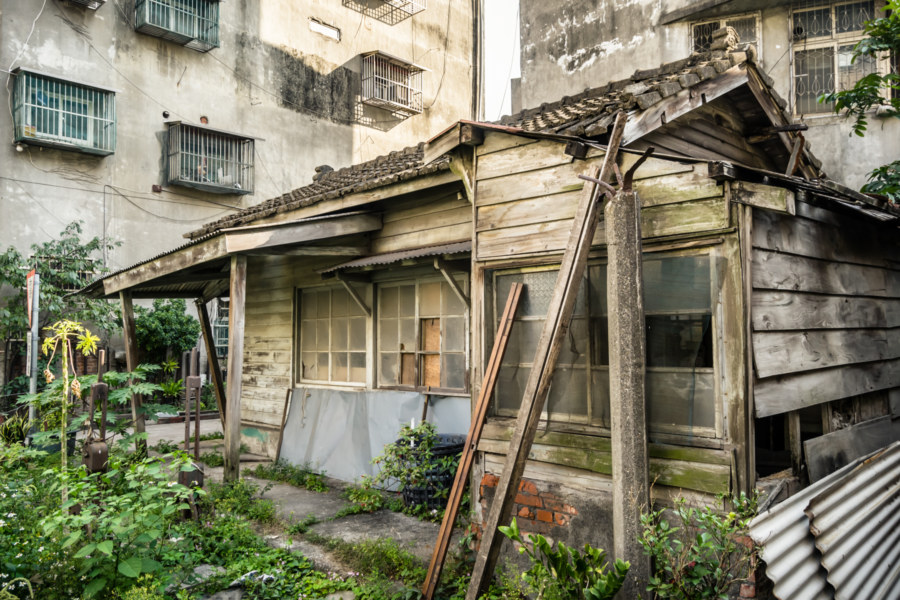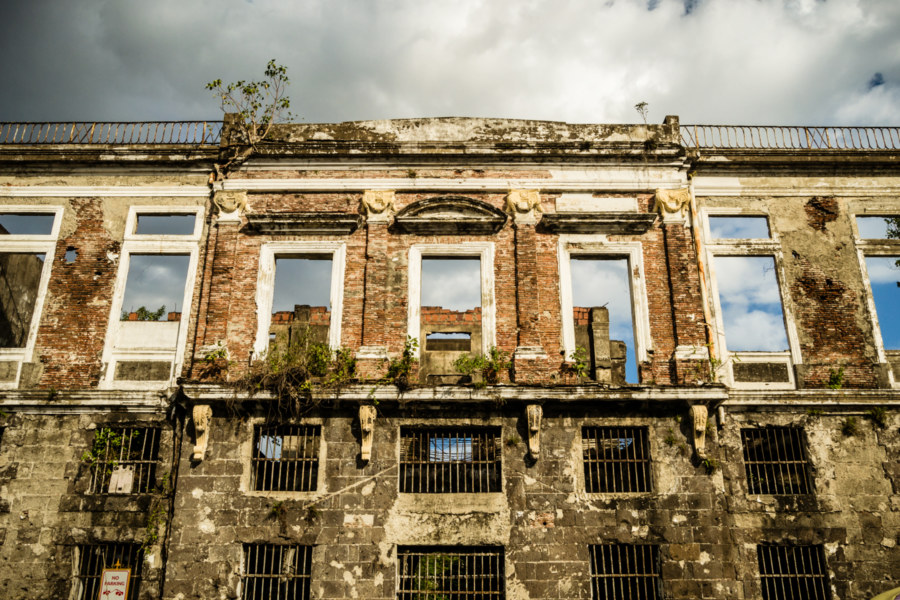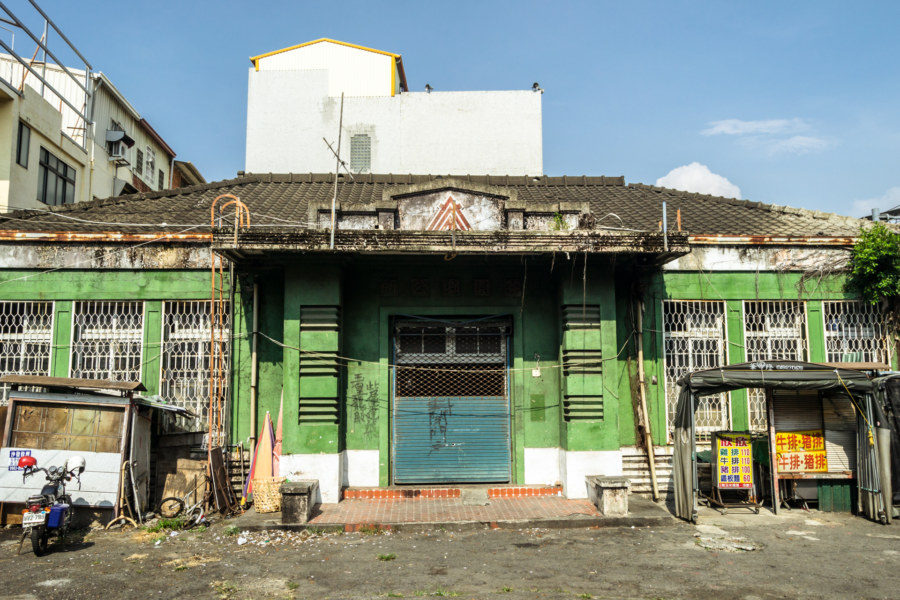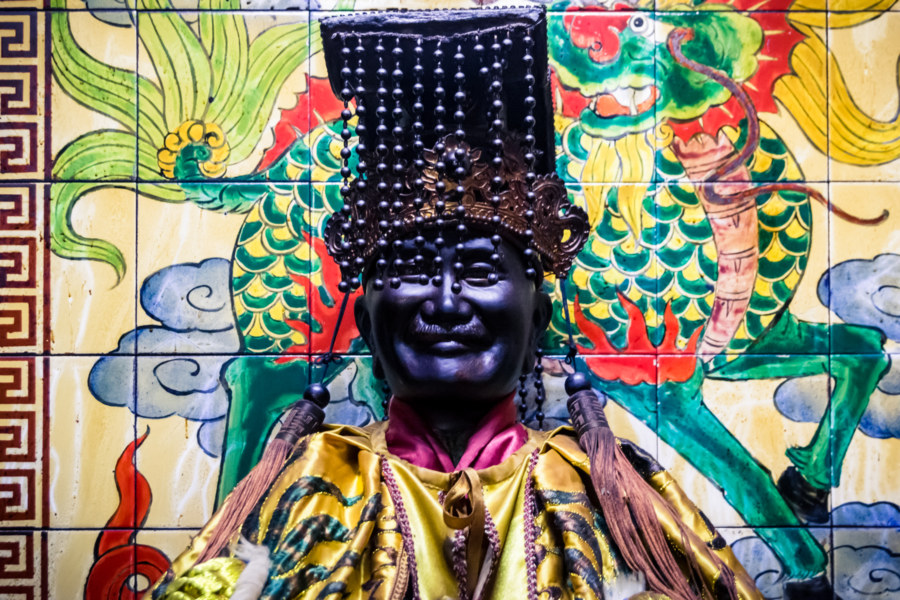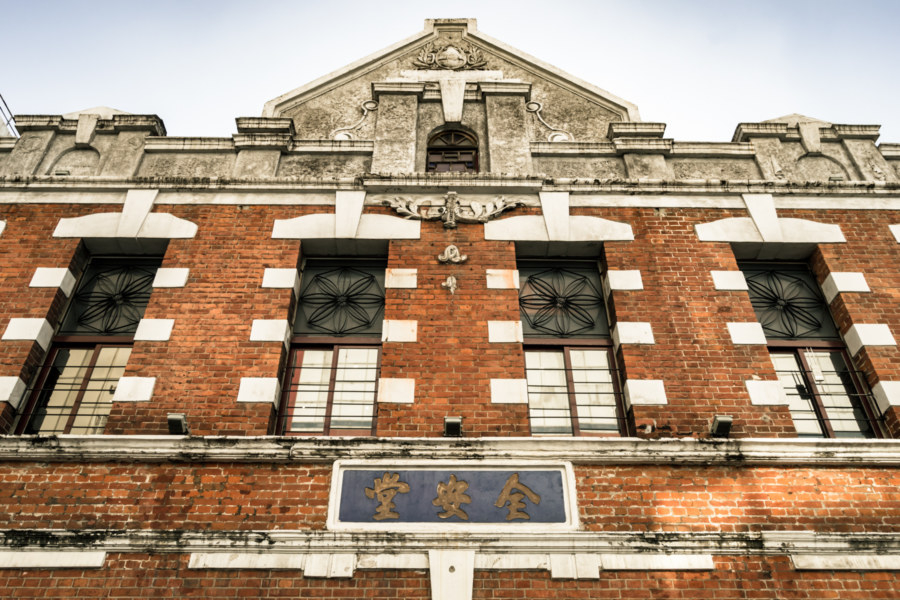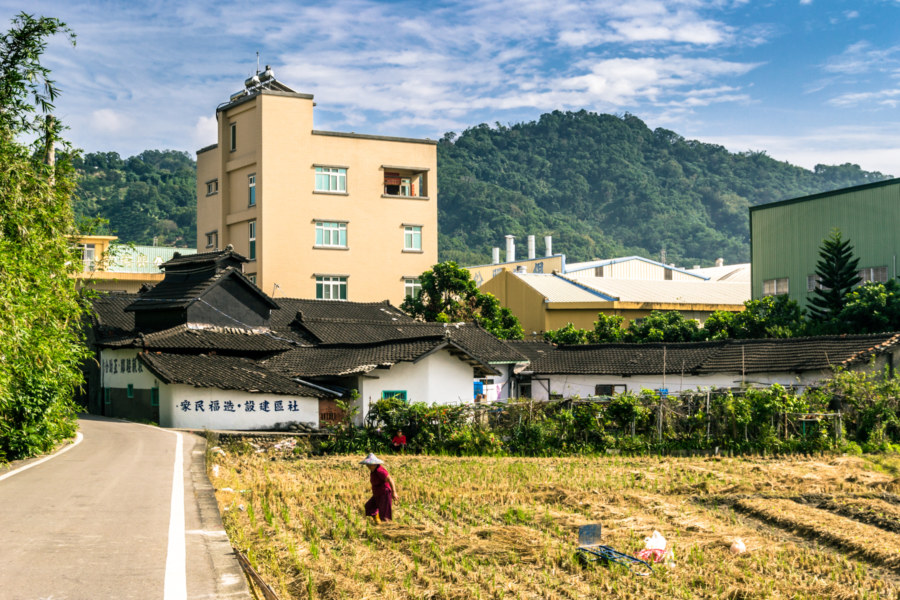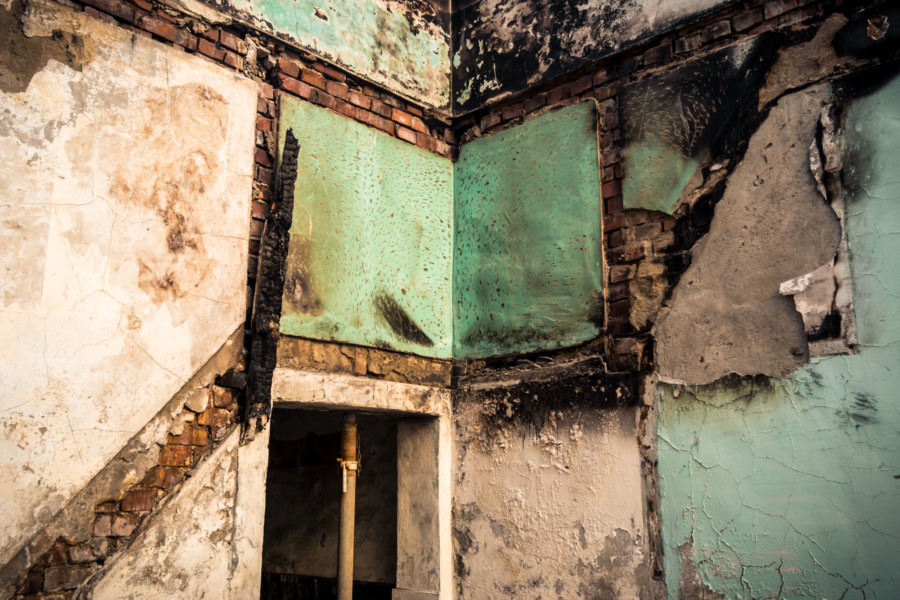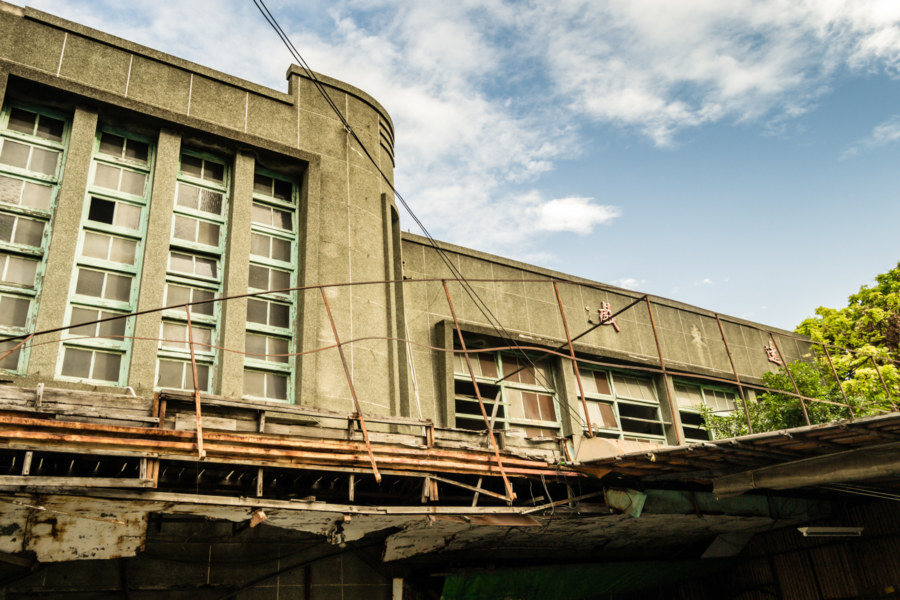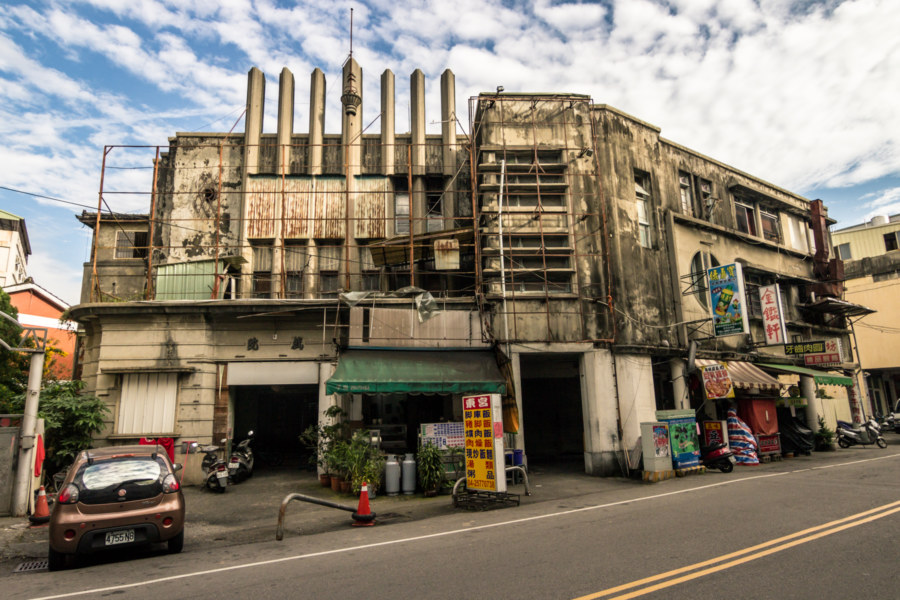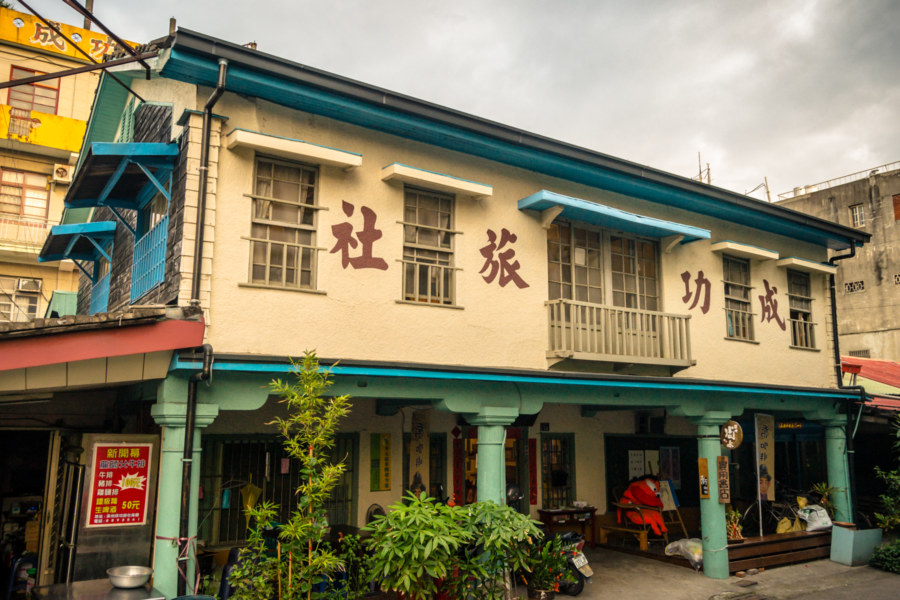South Yuanlin Station 南員林站 is an abandoned Japanese colonial era railway station located not far from the newly reopened Yuanlin Station 員林車站 in the heart of Yuanlin, a mid-sized city in central Changhua. It opened in 1933 as a small stop on the now-derelict Yuanlin Line 員林線 of the Taiwan Sugar Railways 臺灣糖業鐵路, which ran due west across the Changhua Plain 彰化平原 for approximately 9 kilometers to the Xihu Sugar Factory 溪湖糖廠 in Xihu. Apart from facilitating the transport of sugarcane and other cargo this old wooden station also provided passenger service until it was abolished sometime around 1976.
This category mainly features location-specific content about individual points of interest. These might be historic sites, tourist attractions, abandoned places, or something else constrained by geography.
The Ruins of the Aduana Building
The Aduana Building, also known as the Intendencia, is located just outside the walls of Intramuros, the historic center of Spanish colonial Manila. Originally built as a customs house in the 1820s, it has undergone several cycles of destruction and renewal starting in 1863, when the building was almost completely destroyed by the same strong earthquake that leveled much of the old city. Rebuilt in the mid-1870s, it served various government functions—office of the National Archives, first home of the Philippines Senate, and again the Bureau of Customs—before it was ravaged during the initial and final bombing campaigns of World War II. After reconstruction it again served as the offices of different government agencies before it was finally abandoned following a devastating fire in 1979. Restoration plans have been floated since the 1990s but as of late 2015, when I wandered by, the Aduana Building remains in ruin.
Fenyuan Town Hall 芬園庄役場
Fenyuan Town Hall (芬園庄役場) is another example of neglected Japanese colonial era architecture in Taiwan. Built in 1935, this modest building was the administrative center of the village of Fenyuan, located on the eastern edge of Changhua back when it was part of Taichū Prefecture (臺中州). It survived the war and remained in use until 1994 when a newer town hall was built down the street. Art Deco flourishes and the rust-colored emblem over the entrance give Fenyuan’s old town hall a distinctive look. Nowadays it is derelict—but it seems likely that it will be restored and opened to the public some day.
Tamsui Kuixing Temple 淡水魁星宮
Kuíxīng Temple 魁星宮 in Tamsui is nominally dedicated to the eponymous Kuíxīng 魁星, god of examinations and one of the Five Wénchāng 五文昌, a group of deities representative of classical Chinese culture. He typically takes the form of a man balanced on one foot with a writing brush in one hand, his body twisted in a pose suggestive of the strokes of Chinese calligraphy. But you didn’t come here to read about Kuixing—this temple is notable for being one of only a handful of sites in Taiwan venerating Chiang Kai-shek 蔣中正, president of the Republic of China until his death in 1975, as a god. For a time it was informally known as the Tamsui CKS Temple 淡水蔣中正廟.
Quan’an Hall 全安堂
Quán’ān Hall 全安堂 is a century-old building on Taiwan Boulevard 臺灣大道 not far from the old train station in Taichung. Built in 1909 with red brick, reinforced concrete, and a Neo-Baroque style commonly attributed to Japanese architect Tatsuno Kingo 辰野金吾 (中文), it was a pharmacy for many decades, and more recently a bakery. A few years ago it was rebranded as the Taiwan Sun Cake Museum 台灣太陽餅博物館, which now operates a gift store on the ground floor and, beneath the exposed wooden beams of the restored rooftop on the second level, a cafe, event space, and interactive museum.
Liancun Tobacco Barn 鎌村菸樓
Liáncūn Tobacco Barn 鎌村菸樓 is a historic building on the agrarian outskirts of Fengyuan, Taichung, and one of the last of its kind. Back in the tobacco industry heyday of the 1950s there were more than 100 tobacco barns in this small agricultural community. Almost all the others have been torn down or fallen into grave disrepair over the years but this one remains in surprisingly good condition, a testament to the upkeep of the owners, who still live inside. I haven’t had any luck sourcing credible historic information about this place—it isn’t an officially designated heritage property nor a tourist attraction—but I’d hazard a guess that it is at least 70 years old. I would have asked the old lady in the courtyard but she didn’t seem all that interested in having a chat—though she warmly granted permission to shoot these photographs when asked.
An Empty Shell on Dayong Street 大勇街屋
The south side of central Taichung is undergoing massive changes with the opening of the new Taichung Station. Formerly one of the most rundown parts of urban Taiwan, it is now the front of the station, and many old and decrepit buildings like this house on Dàyǒng Street 大勇街 are being torn down to make way for lucrative new developments. It is a minor ruin, one for which I have uncovered no specific history, although a little sleuthing around on Google Street View indicates the building was still intact in February 2015 and boasted a simple signboard for a tea shop: 茶點複合式冷飲. Judging by the construction style I would guess this place dates back to the 1960s, give or take a decade. Gathered here are several photos shared more for their aesthetic appeal than intrinsic historic value.
Beidou Yuandong Theater 北斗遠東戲院
Beidou is home to the historic Yuǎndōng Theater (遠東戲院, literally “Far East Theater”), originally built in 1955. Like most vintage theaters in Taiwan it struggled through the home video era and eventually shut down in the late 1990s. Unlike many other cinemas of its generation it does not appear to have been subdivided into smaller theaters prior to going out of business. It was, however, converted for use as a karaoke bar or gambling den at some point, judging by what I observed on a recent visit. As of 2015 the interior is used for nothing more than storage, particularly for a restaurant that has since colonized the area adjacent to the former ticket booth and entrance.
Donggong Theater 東宮戲院
Dōnggōng Theater 東宮戲院 is located in Dongshi, a Hakka majority township in mountainous central Taichung. Dongshi (or Tungshih in the older Wade–Giles Romanization system) is the gateway to the densely forested interior and was a major center of the lumber industry in Taiwan prior to its decline in the late 1970s and early 1980s. Disaster struck in 1999 with the devastating 921 Earthquake. Dongshi was among the worst hit; over 300 people lost their lives and hundreds of buildings collapsed—but not this grand old theater.
Xizhou Chenggong Hostel 溪州成功旅社
During a recent visit to Xizhou, a small rural township in southern Changhua, I made a brief stop to check out the historic Chénggōng Hostel (成功旅社](https://www.facebook.com/pages/成功旅社農用書店/774365992596884)). I had no idea what to expect, having learned of its existence while browsing Google Maps in search of points of interest, and was pleasantly surprised by what I found there. It is privately owned and operated but they’ve gone to great lengths to preserve the building, transforming it into a tourist attraction and community space. The ground floor is home to a shop showcasing local products and a dual-purpose agricultural library and event space. Upstairs is something of a museum, lightly furnished with rickety beds and tatami mats. The floorboards creak and there is a mustiness about the place that makes it feel genuinely old. It wasn’t difficult to imagine what it might have been like half a century ago in the midst of the sugar boom.
